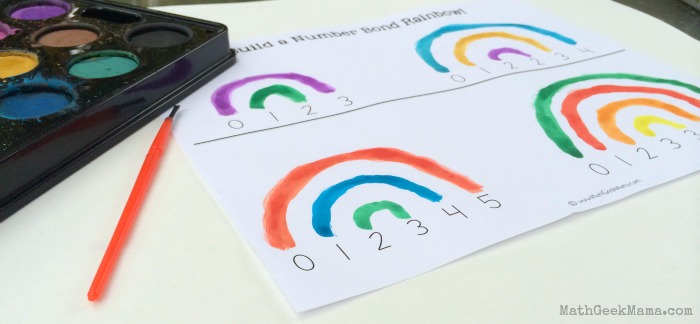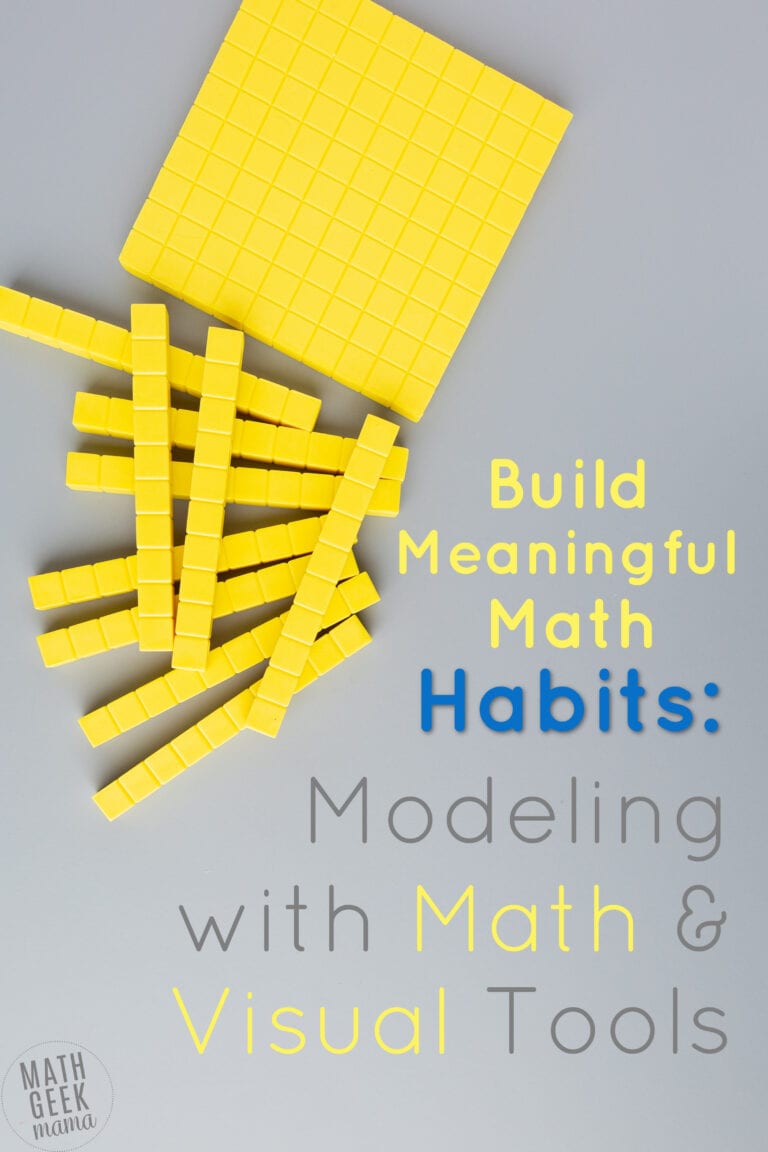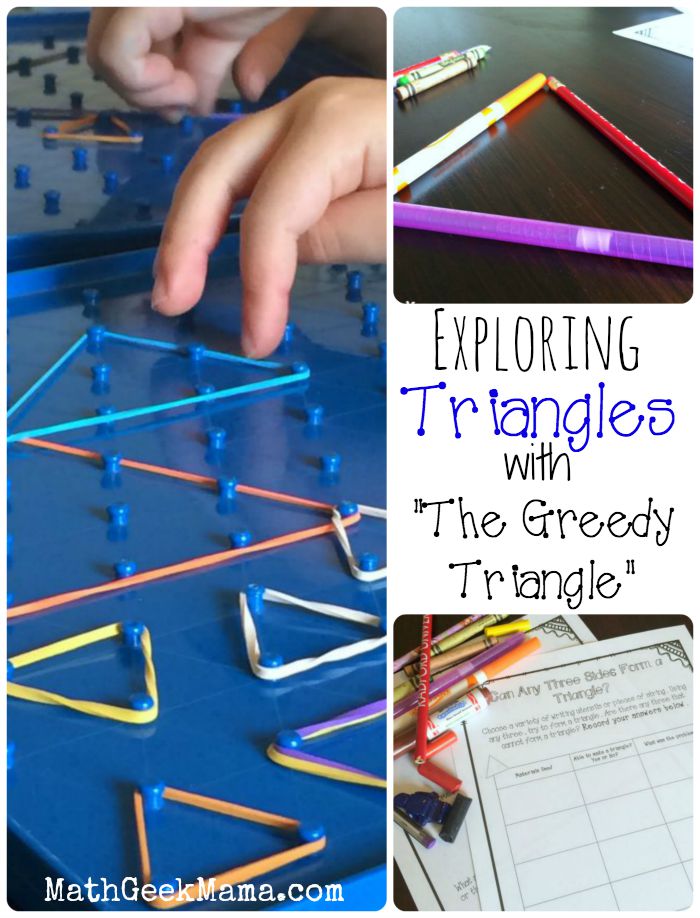10 Things Every Good Mathematician Should Do
Everyone can be a mathematician. Every student can succeed at math! But not every student walks into class already knowing how to think like a mathematician, problem solve and think logically. So here is a list of ten things every student can learn to do and practice as they tackle math problems to become a better mathematician (and better problem solver!).
This list is not my own, it’s actually from a poster I used to have hanging in my classroom. But I did not hang this poster simply because it was cute and took up a lot of space on my otherwise bare walls (I was a high school math teacher…not the most creative type…). I hung it because I really and truly believe that these are some of the most helpful things one can do when trying to solve a problem.
10 Things Every Good Mathematician Should Do:
1. Look For Patterns
If you are trying to solve a complex problem, and have no idea where to start, try to find a pattern and see if that pattern tells you anything. Math (and life) is full of patterns, and often seeing a pattern will either help give you direction in finding a solution, or at least help you to better understand the problem and come up with an idea to solve it.
Related: How to solve problems by finding a pattern
2. Draw a Picture, Diagram or Chart
As a visual learner, this is almost always my first step in working out a problem. Simply drawing a diagram of what’s happening, or organizing the information in a chart or table will give you a better understanding of the problem, and possibly help you spot patterns or information that you otherwise would have missed.
Related: How to solve problems by drawing a picture
Related: How to solve problems using an organized list
3. Estimate
In terms of real life application, this is one of the most overlooked math skills. Estimation is not just random guessing, but rather careful consideration, and is a very important life skill. Estimating can help you quickly determine if a solution makes sense in context, or give you an idea of what the final solution should look like.
4. Ask Good Questions
Often, students look at a problem, have no idea where to begin and thus give up before they have even started. However, learn to ask yourself questions about the problem at hand using what you know. For instance, “What is the question asking?” “What should the solution look like?”
As you get better at thinking through and solving problems you should also learn to ask things like, “Does my answer make sense?” “Does it answer the question being asked?” “Is there another way to solve this problem?” “Is my method of solving going to be true in all cases?” “What happens if I change the numbers in the problem?”
Asking good questions will lead you to a deeper understanding of the problem and give you greater insight for the next problem you solve.
5. Create a Plan
When you first read through a problem, take a moment to think through it. Ask some questions, organize the information, and then come up with a plan. Start by thinking about what your solution should look like (Should it be a measurement? Should it be large or small? etc.) and then come up with a plan for how to get there.
Sometimes you need to find a different piece of information in order to find the answer you’re looking for. Sometimes, you may need to change the plan halfway through because you’re on the wrong track. That’s ok! That’s part of the problem solving process.
Related: Word Problem Solving Templates
6. Take Your Time
Often, students are in such a hurry to “get it done” that they don’t take time to stop and think about the problem. This leads to careless mistakes, or simply guessing because they don’t know how to solve it right away. It’s ok to try something that doesn’t work, and then try something different.
Related: Types of Math Errors & How to Prevent Them
7. Check Your Work
After all that hard work, no one wants to go back and do it all over again. But thinking about whether your answer makes sense, and then briefly going back over each step to check for mistakes is a vitally important step. You didn’t work that hard to solve the problem just to end up with the wrong answer because you said “2 + 3 = 6”!
8. Explain Your Work
Once you have successfully worked through a problem and checked and verified that you have the correct solution, talk through how you went about solving it. Explain your plan to a partner and see if you came up with the same answer. See if you each solved it a different way and learn from each other!
Talking through a problem will not only help you better understand what you did and why it worked, but will help you remember for the next time. If you can’t explain what you did, it may be that you don’t actually understand and you need to go back and look at the problem more closely.
9. Use Math to Solve Everyday Problems
Whether in your classroom, in your home or at the grocery store, there are problems that need to be solved! So put your skills to the test and try to come up with a plan and work out a solution. Using your brain outside of the math classroom will help hone your problem solving skills as well as better understand the math you are learning in school. Then discuss the problems with your classmates and see if there are other ideas for how to tackle the problem!
10. Seek New Ways to Solve a Problem
One of the beautiful things about mathematics is that there is always more than one way to come up with the right answer. Looking for more than one way to find the solution will stretch your thinking and help you grow into a better math student and problem solver, and that is always the goal, right? And as a bonus, looking for another method of solving will help you check your work because if you use two different methods and get two different answers you know something is wrong somewhere!
And finally, don’t be afraid to make a mistake. That’s part of the learning process!! Especially when it comes to mathematics. Sometimes the only way to figure out what works is to first determine what doesn’t. Just don’t give up!
Related: 8 Reasons Making Mistakes in Math is a Good Thing
Happy problem solving!











